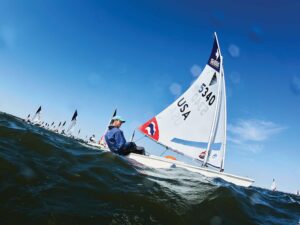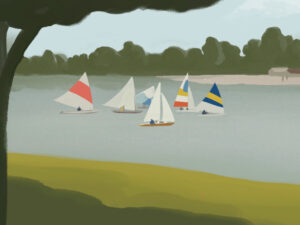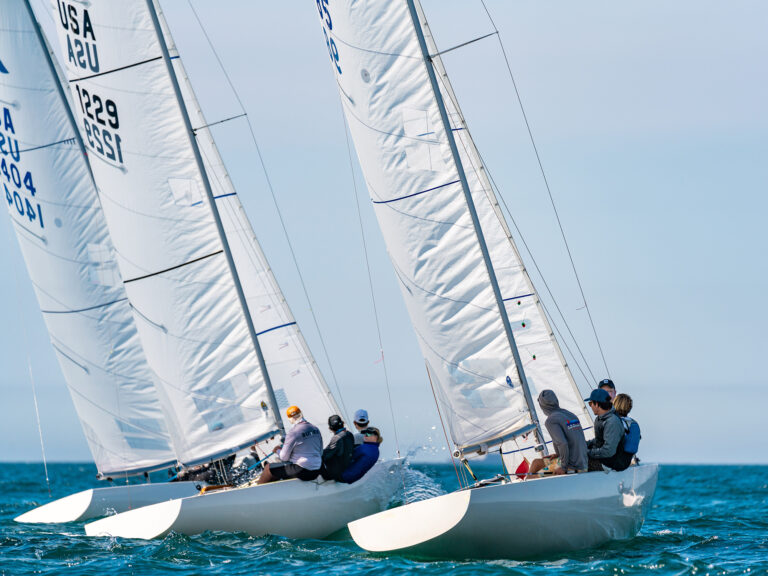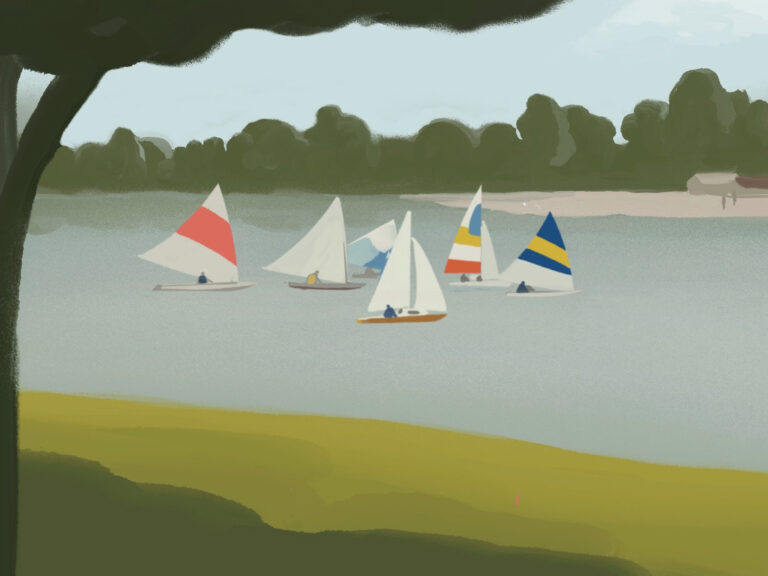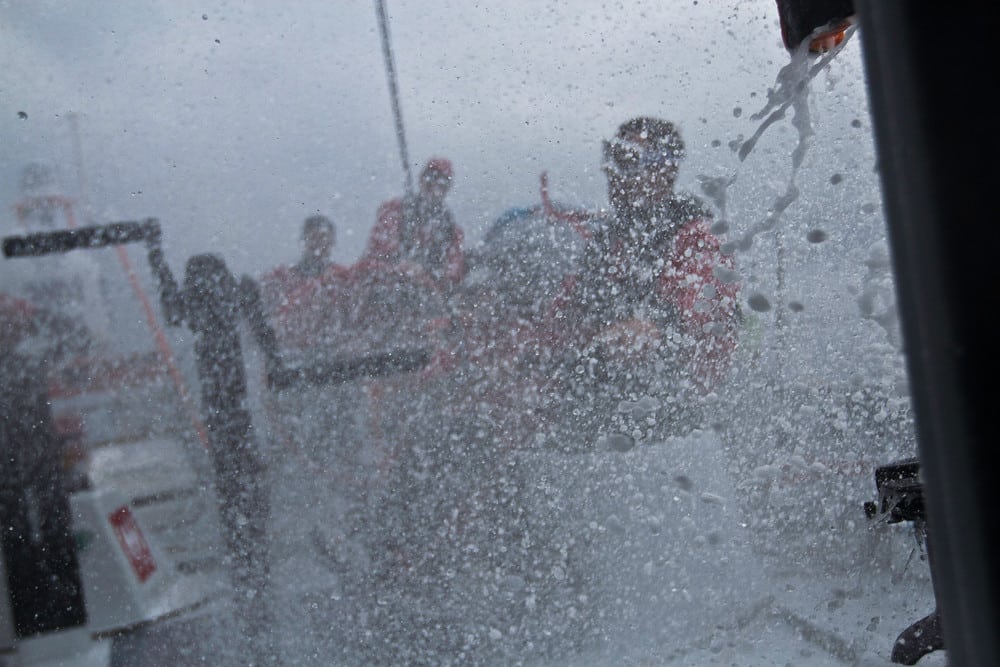
O’Grady Blog Leg 4 Start
Ryan O’Grady, a veteran follower of the Volvo Ocean Race and a top amateur sailor, is providing regular insight and analysis on the 2011-’12 Volvo Ocean Race for SailingWorld.com. To get the full picture of this dynamic race, follow the racing in our Finish Line forum, track the fleet, and catch up on the race with O’Grady’s previous Volvo Voyeur blogs.
_**RRS Rule 4. The responsibility for a boat’s decision to participate in a race or to continue racing is hers alone. **_
One of the most unique aspects of our sport is that, as competitors, we are expected to be responsible for the safety of our crew and our yacht at sea. The decision to race is made based on the ability of the team to compete in the expected weather. In 2006, I was scheduled to compete in Stamford YC’s Vineyard Race aboard a well-prepared 60-footer with a consistent and very competent crew. As the race day drew closer, we all watched Hurricane Ernesto bear down on the race area. With a forecast of beating into gale force winds and large seas, our skipper made the decision to retire from the race just hours before the start. While crushed to not have had the opportunity to set sail, I did appreciate the risk management required of our skipper to make the decision not to risk his crew’s life in storm conditions. Only three boats finished the Vineyard Race that year, but the Race was still run. As Storm Trysail Club’s Commodore at the time, Rich Du Moulin, pointed out, “Distance racing is about balance: balancing risk against opportunity –both tactically and pushing the boat and crew physically.”
The Volvo Ocean Race is billed as “Life at the Extreme.” Press releases continuously tout the race as “testing the crews against some of the most ferocious elements that man can encounter.” Needless to say, it was a shock to hear that Race Director Jack Lloyd chose to postpone the start of Leg 4 from Sanya, China to Auckland, NZ due to concern over high winds and sea state in the South China Sea due to a monsoon. No one doubts that the weather in the area was nasty. At the time, the amateur Clipper Round the World Race was in the area heading to Qingdao when the 68-foot _Gold Coast Australia _fell off a wave, and crew Tim Burgess broke his leg during a sail change. The Volvo isn’t a race for amateurs. It has a long, rich history of brave sailors testing themselves against the worst the ocean has to offer. This was the first time a Volvo or Whitbread Race has ever been postponed, and it was a decision not met with universal praise. In perhaps the strongest voice of dissent, CAMPER skipper Chris Nicholson released the following statement to the NZ Herald Newspaper: “Our strong preference was and remains for Leg 4 to start as intended… We’re professional sailors, not professional risk takers, and the reality is that the conditions our forecasters are predicting out there are manageable… We believe there are several different options available for the fleet to deal with the forecast conditions and position themselves within manageable wind and wave conditions. By short tacking up the shoreline, we would most likely encounter 25 to 35 knots and 2 to 3 metre seas, which this boat is more than capable of dealing with.
“As a team we built and designed a boat for these types of conditions and trained in them off New Zealand last winter knowing that we were likely to encounter them in this race. It is frustrating for all of us that this decision limits our ability to race the boat in the conditions we’ve prepared for. All teams in this race have different agendas they’re trying to push on this decision, but ours is pretty simple and upfront – we’re well prepared and geared up for the conditions, and we want to go sailing.”
Nicholson’s words fell on deaf ears. In an attempt to ensure a complete fleet would arrive in Auckland, Lloyd started Leg 4 on schedule to allow the local Chinese fans, VIPs and media to see some Volvo 70 racing, but then held the fleet for 15 hours at the edge of Sanya Harbor. Puma Ocean Racing had hoped to build on their second place finish in the Sanya In-Port Race the previous day, and led the fleet on the 42-mile portion of the leg they were allowed to complete on Sunday. Unfortunately for Puma, the black cat bad luck streak struck again when just a mile from the temporary finishing position, Puma sailed into a windless hole. Not only did the entire fleet catch the black cat, but Puma’s lead turned into a 40-minute nightmare as they waited for the breeze to fill enough to allow them to finish in last. Overall race leader Telefonica, who also won the Sanya In-Port Race, was the first to the temporary finish, followed by Groupama, Abu Dhabi, Sanya, and CAMPER. No points were awarded for this portion of the race. Instead, teams would be released to finish leg four in a staggered start determined by their finish deltas.
Once the fleet was finally allowed to start the leg proper, they had the aftermath of the monsoon to look forward to. Anyone who has been at sea in a storm knows the sea state can linger for days, and the storm often sucks away any gradient winds, leaving a washing machine of hell for those competing. Abu Dhabi’s MCM Nick Dana likens the experience to riding a mechanical bull: “It’s difficult for a variety of reasons. Its spins around unpredictable, it moves up and down, side to side and manages to heel over when you least expect it. Now imagine trying to stand on that mechanical bull while it’s going nuts. When you go forward of the dagger boards on a Volvo Open 70, above or below deck, this is what you have to look forward to.”
Even at the Volvo level, crews can become seasick, and mal de mer has been making its presence known over the past day. “For a while now I haven’t been feeling the best, but I have definitely felt worse,” says CAMPER MCM Hamish Hooper. “I am on a precipice, not sure which way I will go — downhill fast into seasick hell, or breaking through to happy days and feeling all right. Until my body decides which way to go I will continue my aggressive and bordering on excessive intake of little pink and white pills.” In between popping pills, Hooper has put together the best summary of the leg so far in this video.
Adding to the crew’s struggles are diverging weather models. In order to reach the better conditions in the Pacific Ocean, the boats need to cross the Luzon Strait and head north of the Philippines, but the departing monsoon is taking all of the wind with it. For last-place Puma, currently 34 miles behind leg leader CAMPER, the rapidly changing situation has seen them go from being the most northerly placed boat to now being the most southerly. Their hope at this point is that the breeze shuts off completely and allows a restart between the Philippines and Taiwan, a situation that looks highly probable based on the current GFS model runs for the next 36 hours. Once free of the Luzon Strait, reaching trade wind conditions await, and the first boat to navigate through the light, sloppy, upwind sailing should get a major boost to Auckland. While the pressure is on all of the skippers and navigators, CAMPER’s Chris Nicholson and navigator Will Oxley are certain to be feeling the most. Not only are the hometown Auckland fans expecting to see the New Zealand-flagged yacht finally win a leg, but my sources tell me that CAMPER/ETNZ CEO Grant Dalton is ready to fire the duo if a substantial improvement is not seen in this leg. Perhaps that is why they were so adamant about starting Leg 4 in conditions that seemed to favor their yacht. The pressure is on. Stay tuned to see who handles it best.


